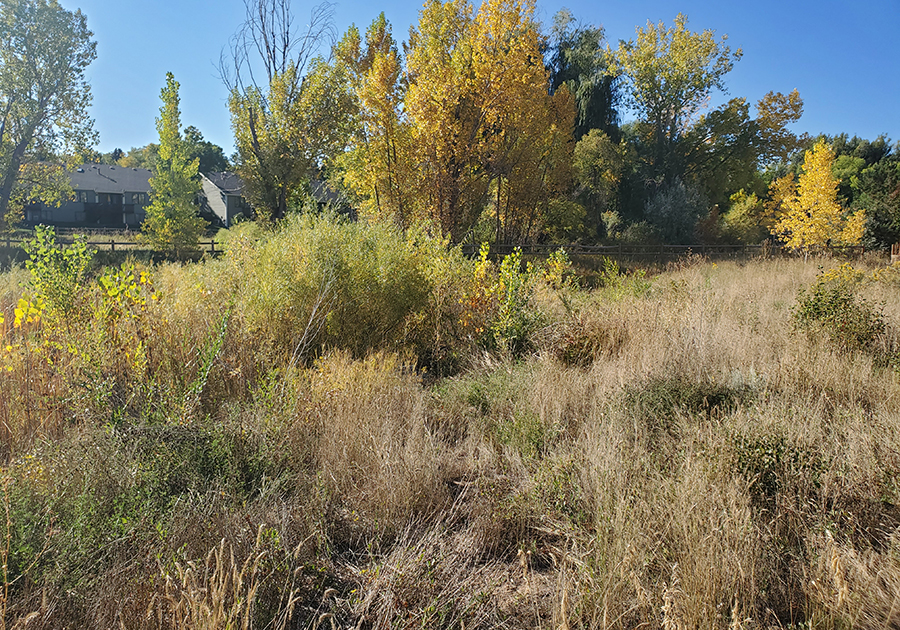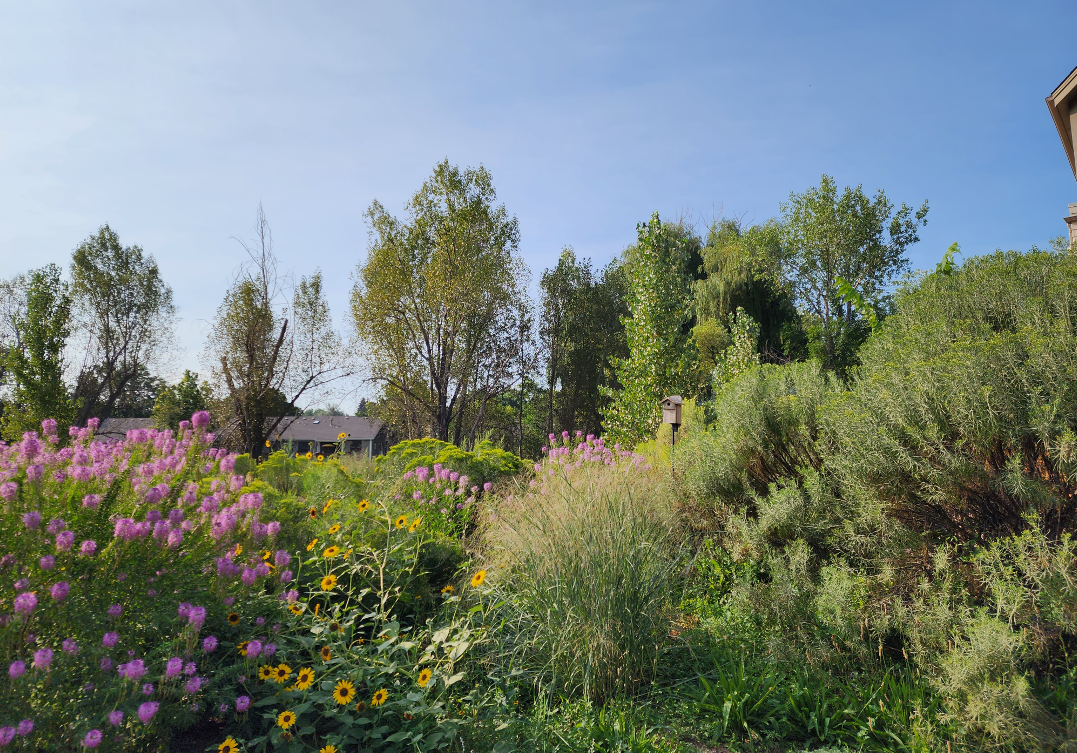
The busy urban landscape often seems disconnected from nature, but through a Nature in the City Make it Happen Implementation Grant, CSU landscape architecture students gained hands-on experience putting their skills to work and breaking down those barriers. Led by Kelly Curl, associate professor in the Department of Horticulture and Landscape Architecture, the project established an urban wildlife habitat on a property owned by the Streamside Neighborhood Homeowners Association through the strategic planting of native flora and the removal of invasive and non-native species.
Before and after




The experience enabled students to engage with the community, learn about local ecologies, and explore how to design and restore a landscape to its natural biodiversity, Curl said.
The team of landscape architecture students contributed to design and drawing support in collaboration with CSU horticulturalists Jennifer Bousselot, Deryn Davidson, and landscape architect Lori Catalano. The result was a thoughtfully crafted planting plan incorporating native perennials, wildflowers, grass seed mixes, shrubs, and trees that formed a meadow habitat, creating mid-story and over-story habitats for various wildlife species.
And they didn’t stop at planting; the team also incorporated birdhouses, birdbaths, bee habitats, and logs to provide safe nesting locations. This holistic approach ensured that the site would serve as a model “naturalization” area, demonstrating strategies for low maintenance and water usage while creating a welcoming urban sanctuary for diverse wildlife.
Key skills for students
In addition to the hands-on nature of the project, students also benefitted from being able to engage in the process from conception to completion. Students performed site amendment and weeding, laid stone paths, and sowed hundreds of plants, all while being able to test out their planting designs through the design-build process.
“Participating in this project, I learned the importance of researching native plant species and understanding the growth patterns and sizes to create an efficient and beautiful planting plan. Once you have done the planning work, the actual implementation of the design is easy and fun. This hands‐on project inspired me to participate in more community planning projects,” said Brendan Dumlao, a senior in the Landscape Architecture program.
This partnership between students and the community highlights the importance of improving the well-being of both urban residents and their wild counterparts.
“This is an ongoing process,” said Curl. “And with annual maintenance, I trust that this native landscape will grow, reseed, attract a multitude of wildlife, support local flora and fauna, and provide a space for the community to celebrate this accomplishment.”

Written by Emily Wilson and Micha Bennett. Photos and images courtesy of Kelly Curl.